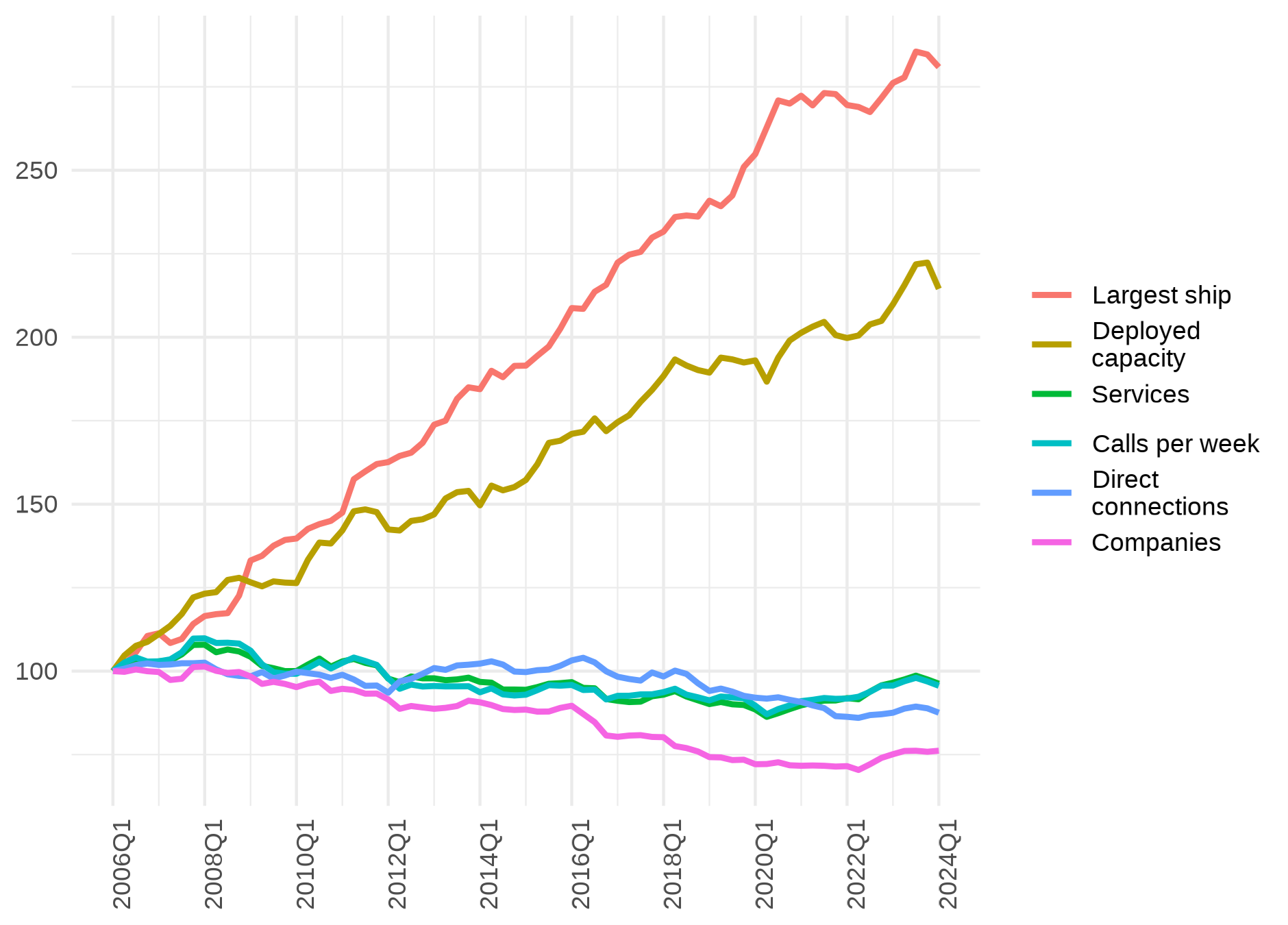The MDS Transmodal World Cargo Database (WCD) records world trade data for approximately 3,000 commodities (SITC* 5-digit) and for approximately 240 countries and territories.
The database includes historic records from 1996 up to the current quarter. It is maintained and updated on a quarterly basis.
Trade data is analysed and disaggregated into unitised and non-unitised trade in tonnes with unitised trade further disaggregated to create a database of containerised trade measured in TEU.
WCD provides source data for our market and forecasting studies. In addition, WCD provides the basis of a trade forecasting model.
*Standard International Trade Classification
WCD – Forecasting model
Forecasts are based on multiple trend analysis of country-commodity relationships in imports and exports over the historic period since 1996 and projected forward to specified dates in the future. Algorithms are used to apply weight to trends in the most recent years, so capturing significant changes in individual trades in the most recent period. The impact of the economic slowdown during 2008-09 and different rates of recovery in different world areas, for example, will have been captured in these forecasts.
Basic principles of the methodology:
- Top down forecast of trade to / from any country are produced using the MDST World Cargo Database (WCD). Forecasts are based on multiple trend analysis of inward and outward trade by country-country-commodity.
- The forecasting model uses algorithms to produce projections that give more weight to recent years. WCD produces forecasts of national imports/exports in all commodities with all trade partners.
- A more detailed analysis of some of key commodities within overall flows is provided by analysing trends in specific commodities at 5 digit SITC* level.
- For containerised cargo, data is filtered to estimate the proportion of unitised/non- unitised traffic (separating containers, bulks and conventional trade).
- Flows are distinguished by those moving by sea and land so as to arrive at an estimate of maritime traffic.
Container trade forecasts take account of:
- The proportion of each commodity carried in containers (using stowage factors)
- Removal of transhipment containers (to avoid double counting)
- Dividing containers between seaborne flows (in containerships) and overland or ferry movements on trailers to achieve estimates of Maritime TEU (MTEU)
- Estimation of empty container movements by calculating trade imbalances
- Containerisation factors are modelled to increase with the volume of cargo on each specific country trade flow
- Containerised cargo forecasts include containerisation factors of different commodities according to the country of origin/destination. The model incorporates assumptions covering increasing containerization of commodities in line with increasing forecast volumes.
WCD – and port traffic forecasts
The model approach produces forecasts for countries at the national level. The growth rates indicated by the WCD model can then be applied to a particular port. The WCD model assumes that long run trends in GDP growth and all other factors that affect trade continue in the future. This provides a base case of unadjusted forecasts and assumes that there is no change in existing port market shares.
WCD forecasts provide the principle guide to trends in future port traffic. However forecasts for certain specific commodities can then be adjusted to take account of local developments and their impact on specific ports, such as the development of new factories, or local regulatory changes, such as the imposition of tariff barriers on imports or restrictions on exports of various commodities.



